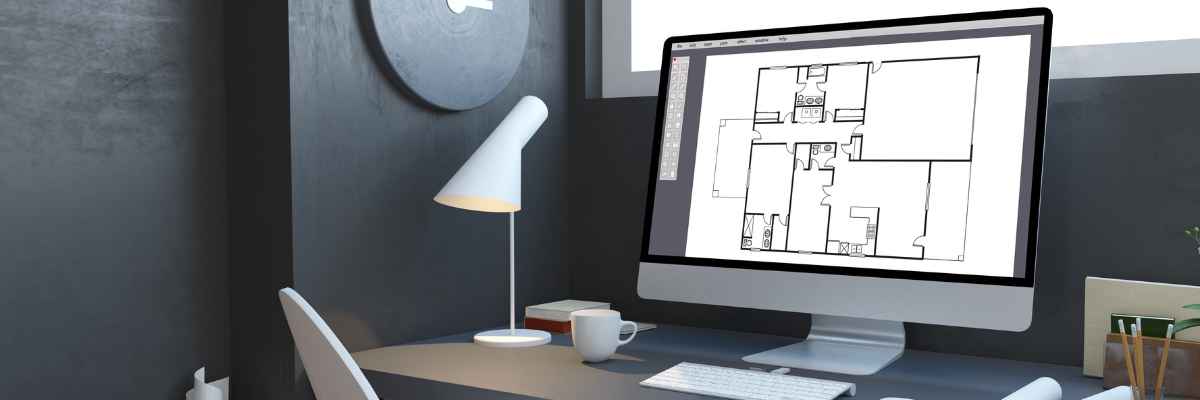Which is the Best Design Software for Civil Engineering in 2026?

As the field of civil engineering continues to expand at a rapid rate, there is more demand than ever for design software that is versatile and adaptive. For civil engineers working in a variety of fields, the perfect design software should be able to handle everything from complex 3D modelling to thorough structural analysis. Choosing the right design software can have a significant impact on a project's outcome, from the initial stage to the designing phase.
In this blog post, we will go on a thorough search for the design software for civil engineering, exploring its features, and criteria for choosing the software that fits a project's need. We explore the complex details of different civil engineering design software list, their advantages and disadvantages, and the specific demands and needs of the software used by civil engineering professionals.
Design Software for Civil Engineering
Design software for civil engineering is an essential tool that helps civil engineers create, analyze, and optimize designs for a wide range of infrastructure projects, such as roads, bridges, buildings, and water resources systems. Design software has become an essential resource for civil engineers, speeding and enhancing the design process.
Civil engineering design software covers a wide range of specialized applications; these advanced tools allow civil engineers to examine, evaluate, and optimize their work with excellent precision and efficiency.
Benefits of Using Design Software for Civil Engineering
Some of the key benefits of using design software for civil engineering include:
• Increased productivity: Civil Engineering Design software can automate many of the time-consuming tasks involved in the design process, such as drafting, calculations, and analysis. This can free up civil engineers to focus on more creative and strategic aspects of design.
• Improved Accuracy: Using design software can help ensure that designs are accurate and suitable with all applicable standards and rules. This helps to reduce the chances of making mistakes and redoing them.
• Communication with Others: Design software can help improve communication and collaboration among engineers, as well as with other stakeholders involved in a project. This can help to ensure that everyone is on the same page and that designs are meeting the needs of all stakeholders.
• Enhanced Visualizations: Design Software helps to create precise and detailed 2D and 3D models of civil engineering structures that make it easier to understand and communicate ideas with teams and clients.
• Optimized Designs: Engineers can use design software to optimize their designs for a variety of factors, including cost, performance, and sustainability. By doing this, they can make sure that projects are completed on schedule and budget.
There are many advantages for civil engineers when they use design software. Design software helps civil engineers create more accurate, efficient, and affordable designs by utilizing the power of technology.
Best Design Software for Civil Engineering in 2026
Civil engineers use a variety of design software to develop accurate and complete plans for infrastructure projects. There are many good civil engineering design software solutions options in 2026, each has its benefits and drawbacks. Here is the list of best design software for civil engineering in 2026:
• AutoCAD Civil 3D
• MicroStation
• Staad Pro
• ETABS Software
• Tekla Structures
• Autodesk Navisworks
1. AutoCAD Civil 3D
AutoCAD Civil 3D developed by Autodesk, is a complete design software program that is specifically used for civil engineers. AutoCAD Civil 3D is a commonly used design software used for drawing preparations. It offers a wide range of features for designing roads, bridges, tunnels, etc. It offers a wide range of creating, editing, and managing civil engineering projects.
AutoCAD Civil 3D allows civil engineers to create detailed 3D models of civil engineering projects. Civil 3D supports collaboration and Building Information Modelling (BIM) workflows. This allows users to collaborate with other users and integrate with other BIM software.
2. MicroStation
MicroStation also known as Bentley MicroStation is a robust design software that is used to produce civil engineering drawings. MicroStation was developed by Bentley and it is a very popular software program that is used for 2D and 3D drafting, modelling, and analysis. MicroStation is a popular choice among civil engineers looking for a versatile and powerful design software platform. The software can be used to design a variety of civil infrastructure projects, like roads, buildings, and bridges.

MicroStation is also well-suited for collaboration since many users can work on the same project at the same time. MicroStation has several features for organizing and analyzing data in addition to its comprehensive design features. This makes it an important tool for civil engineers who manage huge and complex projects.
3. STAAD Pro
STAAD Pro is the most common structural analysis and design software tool that is used for analyzing and designing structures, like buildings, bridges, and towers. Staad Pro is a popular choice for civil engineers who need to analyze and design a wide range of structures. It is a useful tool in the structural engineering toolkit because of its advanced analysis capabilities and seamless interfacing with other programs, such as MicroStation.
4. ETABS Software
ETABS which stands for “Extended Three-Dimensional Analysis of Building Systems”, is a structural analysis and design software program developed by Computer and Software Inc. (CSI). It was widely used by civil engineers for the analysis and design of buildings, and other structures. ETABS provides a comprehensive set of features for building structure modeling, analysis, design, and documentation.
5. Tekla Structures
Tekla Structures is a BIM (Building Information Modeling) software package that is used for designing and detailing steel and concrete structures. It offers a variety of features for modelling, analysis, and detailing. Tekla Structures is also well-integrated with other Tekla software products, such as Tekla BIMsight and Tekla Tedds.

Tekla Structures is a popular choice for civil engineers who design complex steel and concrete structures. The software offers several features for creating detailed models, and it can be used to generate fabrication drawings and other construction documents. Tekla Structures is also well-suited for collaboration.
6. Autodesk Navisworks
InfraWorks is a BIM software program that is used for civil infrastructure project planning, design, and visualization. It has several features for doing analysis, producing visualizations, and building 3D models. It also has strong integrations with other Autodesk software programs, including Revit and Civil 3D.
InfraWorks is an especially useful tool for civil engineers who need to develop attractive renderings of their designs. The program is used to produce animations, simulations, and realistic 3D models of projects. This can be useful in getting public approval for projects and in conveying design concepts to stakeholders.
Factors to Consider When Choosing a Civil Design Software
With so many civil design software choices on the market, choosing the right one for your specific project can be difficult. To make it easier the process, here are the following are some important things to think about while choosing a civil design software:
• Project Requirements: The first and most important factor to consider is your project-specific requirements. Choose the design software
• Features and functionality: Make a list of the essential features you need to design, such as 2D or 3D modelling, rendering, animation, or typography. Then, research different software options to see which ones offer the features you need.
• Ease of Use: If you're a beginner in designing, you'll want to choose software that is easy to learn and use. Look for software with a user-friendly interface and plenty of tutorials and support resources.
• Technical support: If you run into problems with the software, you'll want to make sure you have access to technical support. Look for software that offers live chat, phone support, or email support.
• Customization and Advanced Features: Check whether the software may be customized to meet your unique requirements. Also, consider any advanced or specialized tools that can improve the capabilities of your project.
Keep in mind that the best software for one project may not be suitable for other projects. So, it’s important to consider some other factors to choosing civil design software that matches your project requirements.
Conclusion
There are many great options out there, so before choosing one, make sure you do your homework and carefully weigh all the pros and cons. The most popular civil engineering design software programs are Bentley MicroStation, Tekla Structures, Autodesk Civil 3D, and Revit. These applications provide a wide range of features and capabilities, and they are used by civil engineers all around the world.
Choosing a design software for civil engineering in 2026 is a decision that involves a very careful evaluation of several features. Although a universal solution does not exist, it is obvious that the industry is changing quickly and that new tools and technologies are always being developed. The best design software for civil engineering will depend upon the individual project requirements, the experience of a team, and the financial limits of a project.


